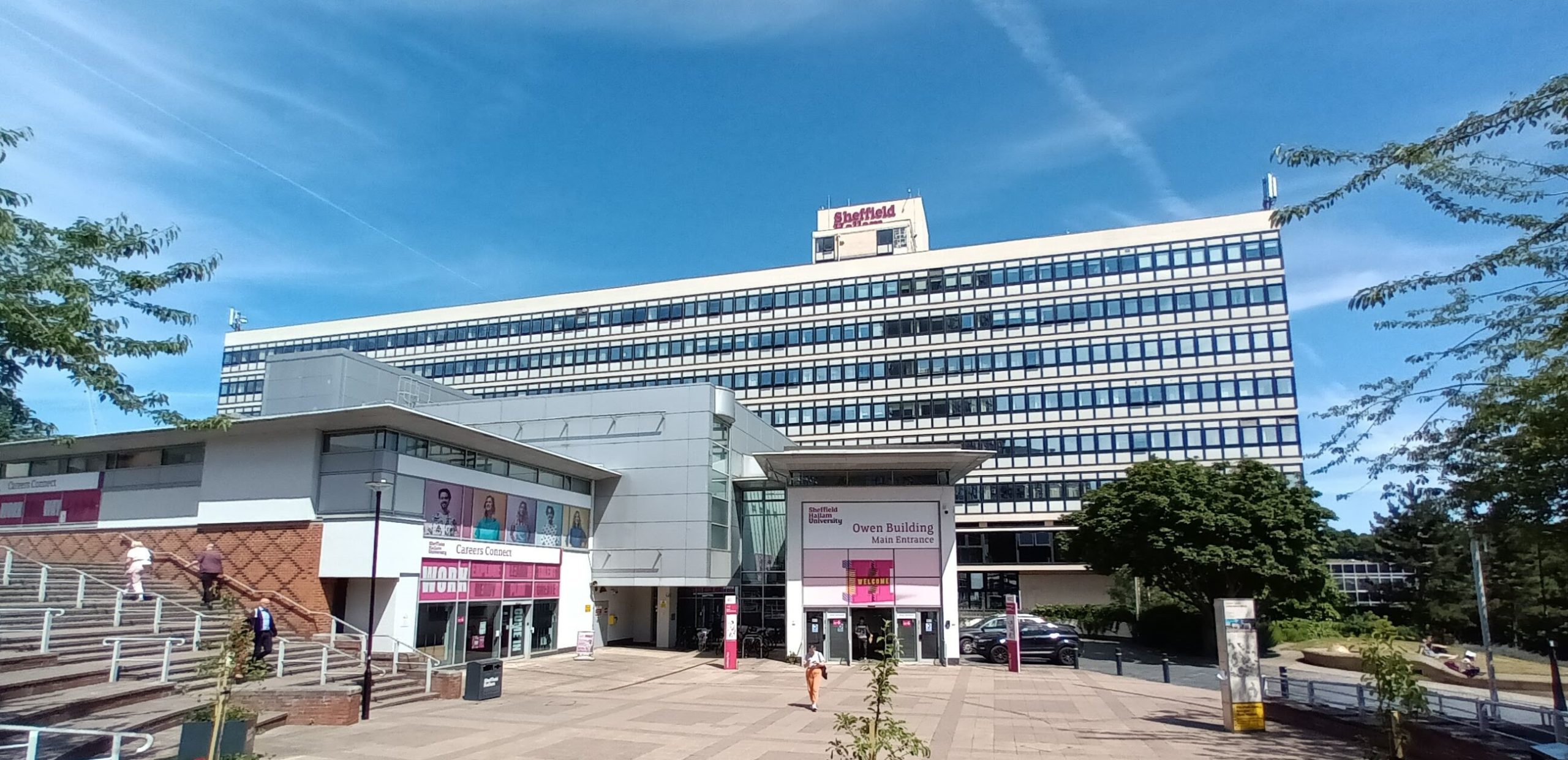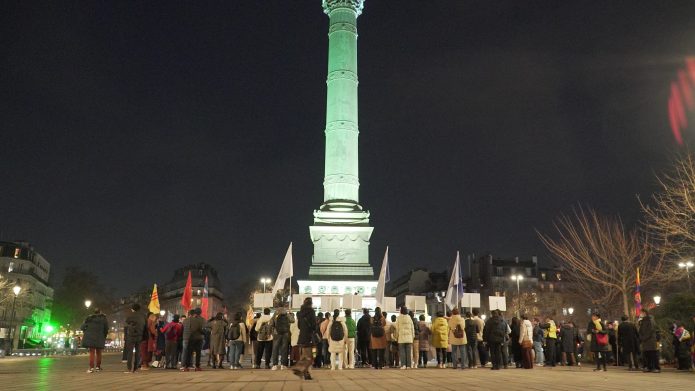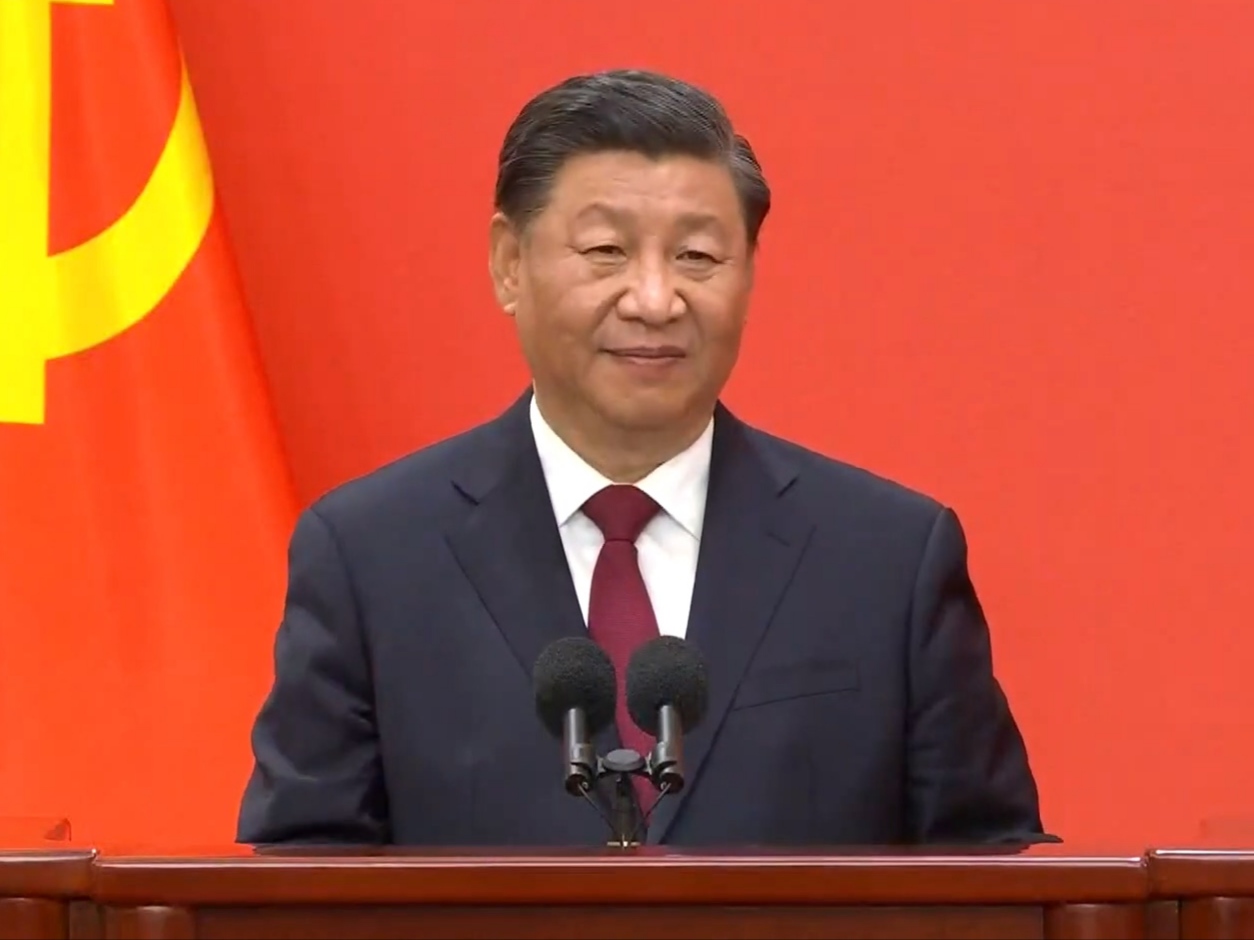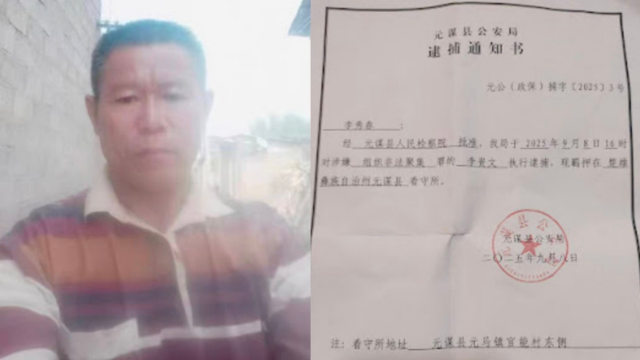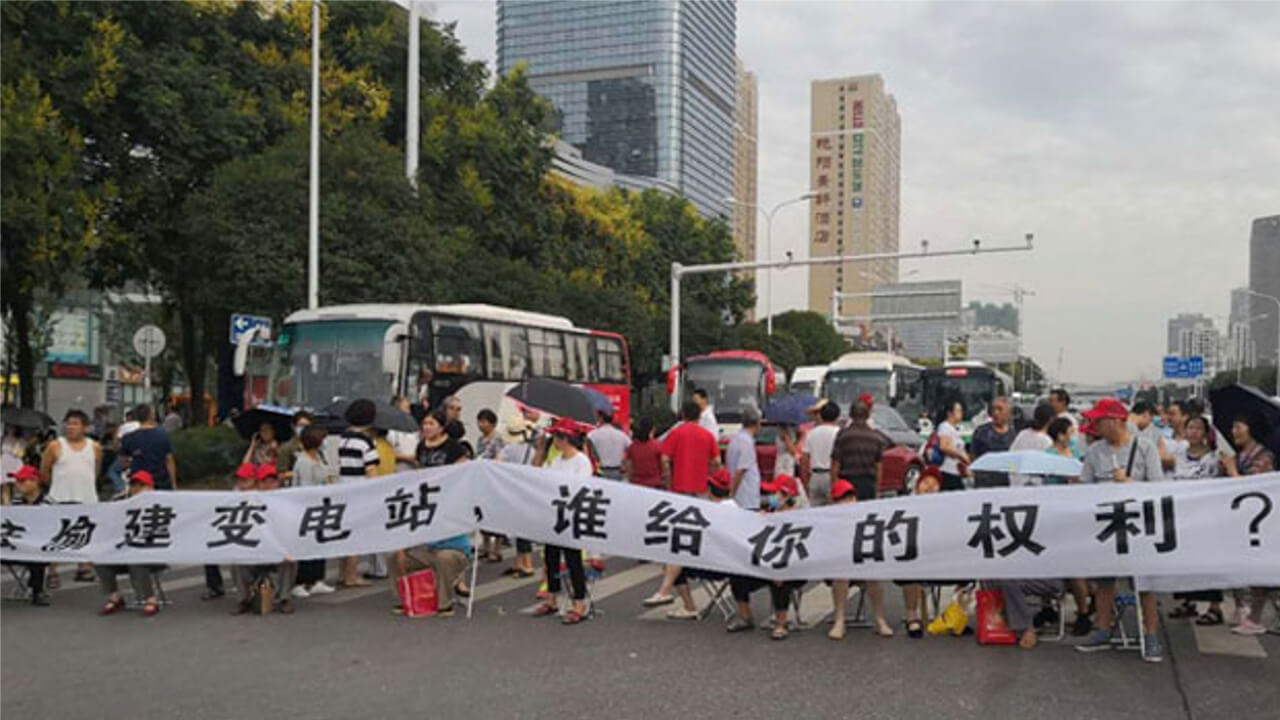
Photo courtesy of an RFA listener.
Authorities in the central Chinese province of Hubei are holding an unknown number of people after thousands of protesters took to the streets in protest at a planned power facility.
Several thousand residents of Hubei’s provincial capital and Yangtze River port Wuhan took to the streets on Tuesday and Wednesday over plans to build a transforming station in the city’s Gaoxin district, local residents told RFA.
By Wednesday, several hundred police were drafted in, beating up and detaining protesters, leaving many injured, they said.
By Thursday, as heavy rains hit the city, the streets around Gaoxin district’s Guangrong Development Area, the proposed site for the power plant, were cleared of protests, an Wuhan resident surnamed Hong said.
“Pretty much everyone from around the development area turned out,” Hong said. “There were around several thousand people on both days both in the morning, before we went to work … and in the evening, when we finished work.”
“A lot of local residents came out in protest, and [the police] really did beat people up, shoving them around and bashing them, and I saw one guy dragged into a police vehicle,” Hong said. “I saw two or three people in the vehicle as well.”
Hong said local residents fear the impact of pollution from the transforming station on their quality of life.
“You get [non-ionizing] radiation from transforming stations, didn’t you know?” he said. “It would be around 400 meters [from people’s homes], and there are a few primary schools in the area too,” he said.
Another resident surnamed Li said that while many residents agree on the need for a transforming station, they are highly suspicious of a lack of official transparency around the project.
“They should have told residents about their plans, and let them see the construction plans,” Li said. “They should also have told us other things, for example about whether it’s safe or not.”
“I think residents of the city; citizens even, have the right know about these things.”
Harmful to health
However, an official who answered the phone at the Gaoxin district government offices declined to comment when contacted by RFA on Thursday.
“We don’t really know the ins and outs of this situation here, so we don’t really know much about the latest developments,” the official said.
Repeated calls to the local police department rang unanswered during office hours on Thursday.
According to the World Health Organization (WHO), electrical substations are sources of extremely low frequency electromagnetic fields.
Short-term exposure to very high levels of electromagnetic fields can be harmful to health, WHO said, adding that current public concern focuses on possible long-term health effects caused by exposure to electromagnetic fields at levels below those required to trigger acute biological responses.
“Despite extensive research, to date there is no evidence to conclude that exposure to low level electromagnetic fields is harmful to human health,” it said.
The U.K. group Powerwatch said high-level electromagnetic fields have been independently measured in residential accommodation, in particular when substations are in the same building.
“If there is a substation in the building where you live or work, the field levels on the same floor and the floors above and below could easily exceed the levels at which serious health effects, such as cancer, dementia or depression have been reported,” according to the group’s website.
It cited studies as saying that visible substations and cables also reduce the value of a property, with the degree of drop in value depending on the type of property.
The U.K. Parliament in 2011 cited scientific studies as indicating the “possible doubling” of rates of childhood leukemia in the immediate vicinity of transforming and distribution facilities.
Reported by Wong Lok-to for RFA’s Cantonese Service. Translated and edited by Luisetta Mudie.
Source: Copyright © 1998-2016, RFA. Used with the permission of Radio Free Asia, 2025 M St. NW, Suite 300, Washington DC 20036. https://www.rfa.org.



